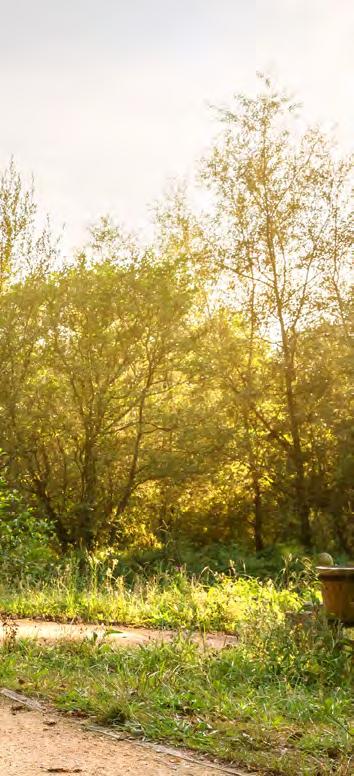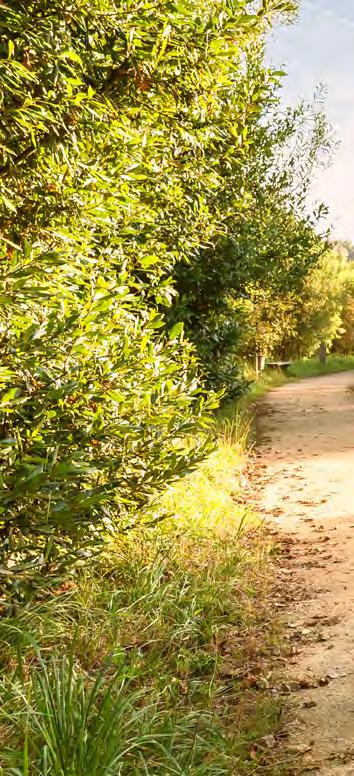
5 minute read
The power of friendship:
England’s biggest intergenerational project with care homes

Care homes across the UK have continued to embrace and champion intergenerational linking to strengthen meaningful connections. Tom Owen, Director of My Home Life, updates on the Care Home Friends and Neighbours: Intergenerational Linking project and shares key project findings.
‘I was surprised by the fact that the residents’ attention, mood, energy and enjoyment all increased when the students came to visit – they’d come alive. It is nothing short of a miracle!’ – Care Home Lead
From the simple but meaningful (storytelling sessions on Zoom, making friendship bracelets, creating shared artwork and exchanging cards) to the large and imaginative (theatre performances, ‘festivals of cool’, beach cleans and Jubilee parties), Care Home Friends and Neighbours (FaNs): Intergenerational Linking has been an innovative project from start to finish.
Beginning in 2019, the national social action project aimed to form meaningful, sustainable and mutually beneficial connections between schools, youth groups and care homes and was targeted in 11 less socio-economically advantaged areas of England.


Fast forward to today and over 4,000 young people aged 5-14 have connected with approximately 2,000 older people living in care homes, making Care Home FaNs: Intergenerational Linking England’s biggest intergenerational project with care homes!
The project has been led by a partnership from us at My Home Life England (MHLE) and our colleagues at The Linking Network (TLN), combining MHLE’s expertise with older people and care homes with TLN’s expertise working with young people and schools. February 2023 saw the end of the original three-year funded model and we are delighted to share the project outcomes, including our full research report and a free handbook for schools and care homes to support them in setting up an intergenerational link.
Project outline
Care Home FaNs: Intergenerational Linking was targeted in 11 areas of England, and we worked alongside a network of brilliant local organisations and charities who delivered the project in their local area. All were experienced in working with either younger or older people, and had a range of different specialisms including education, social action, nature activities, theatre and faith-based organisations. ‘Local brokers’ from each of these organisations led the project and took their own approach to programme delivery, which led to amazing creativity. Watch a video highlight from each of the 11 projects here.
Project impact
Both the school and care home leads were surprised by just how much the children and older people enjoyed spending time together and sharing experiences, and how much they looked forward to the interactions.
Of those surveyed:
• 95% of care home leads reported that residents appeared to enjoy the intergenerational interactions ‘very much.’
• 91% of school leads reported that their children appeared to enjoy the intergenerational interactions ‘very much.’
• 90% of school and care home leads reported that they would recommend intergenerational linking to others.
For older people, one of the most frequently observed impacts was that they were happier during and after intergenerational sessions. Care home leads noted that older people were more talkative than usual and seemed to ‘come to life’ around the children. Older people were able to share skills, knowledge, stories and/ or experiences with the children, adding to the enjoyment and value of the experience for them.
‘I haven’t felt this re-energised for years!’ – Care home resident, Leeds
Some strong themes also emerged around the pronounced impacts of intergenerational linking for particular groups of older people, including those with dementia, depression, sensory impairment, and from culturally and linguistically diverse backgrounds.
‘There was one particular gentleman who was very depressed, hadn’t smiled, hadn’t spoken much, didn’t want to interact with anyone, who didn’t stop smiling after that first meeting and was just a completely different person’ – Local broker
For the young people, school leads frequently observed the enthusiasm and excitement generated among the children: many looked forward to the in-person visits to the care homes and spoke about the older people outside of the interactions. Also noted was an increased interest in activities like reading, writing and making art when this was done with or for the residents, and many formed relationships with individual older people, either in person or virtually.
‘Meeting older people has definitely boosted my confidence, talking to all of the care home residents has been a pleasure.’ –Primary School Student
Another emergent theme was that certain groups of children responded particularly well to intergenerational linking, including children with additional learning needs, those with English as an additional language, and children dealing with bereavement or who did not have grandparents of their own.
‘A teacher talked about some of her pupils with autism when they met residents living with dementia. Almost a mutual understanding and the comfort of sitting in silence. She said it was really beautiful to see.’ – Local Broker
‘A little boy who had recently lost his dad really clicked with one of the men in the care home – spending an hour walking around the garden together. At the end of the session, the little boy said, "I only live down the road, maybe my mum could come and I could spend time with you again".' – Local Broker
Things that worked well
• In-person activities generally yielded more positive and meaningful interactions, but real value was seen in virtual meetings, particularly to prepare younger and older people for meeting in person and to build and/or maintain connections when physical interactions were not possible.
• Interactions and activities linked to seasonal events such as Christmas, Valentine’s Day or the Queen’s Jubilee celebrations were some of the easiest to organise and provided a good foundation for conversation, creativity and learning.
• Student- or resident-led activities – ideas were designed as shared experiences where the younger and older people chose what they wanted to do together. Having a shared sense of purpose contributed to effective interactions, and activities that involved some sort of social action (for example, beach cleaning) were commonly reported as among the most successful.
• The most effective activities were often the simplest. These ‘enabled the children and older generation to become comfortable in each other’s company’ and 'build a positive relationship’. Examples included ‘a small number of residents coming to a school and chatting or reading with small groups of children’ and ‘taking the children to see where the care home is, even if they could only wave through the windows’.
Please visit our website to read the full research report, plus:
• A short summary of the research with outcomes, impact and recommendations.
• A free handbook for schools and care homes to support them in setting up an intergenerational link.
• Other activities and resources to support intergenerational linking.
• Our national webinar sharing our findings from the project.
The future
A key element of the project was sustainability, so it’s fantastic that the school and care home leads expressed a strong desire for the relationships established throughout the project to be sustained. Of those surveyed, 80% of care home leads and 71% of school leads said they definitely intended to continue their intergenerational link, and many are still going today.
At My Home Life England, we continue to promote quality of life and positive practice in care homes and other care settings through consultancy, research and local development work. Through our Care Home Friends and Neighbours (Care Home FaNs) programme, we will continue to support care homes to connect with their local communities, including schools and youth groups. We welcome anyone interested to contact us at mhl@city.ac.uk
Acknowledgements
Care Home FaNs: Intergenerational Linking was funded through the #iwill Fund. The #iwill Fund is made possible thanks to £66m joint investment from The National Lottery Community Fund and the Department of Digital, Culture, Media & Sport (DCMS) to support young people to access high-quality social interaction opportunities. The Dunhill Medical Trust acted as a match funder for this project and awarded grants on behalf of the #iwill Fund. We are so grateful for their support throughout the project. CMM


















